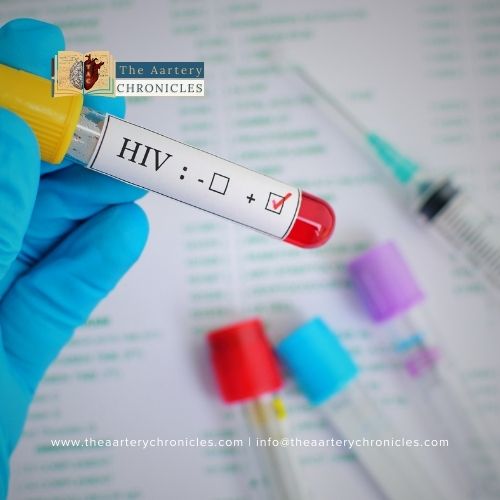

Top 10 Environmental Hazards & Policies Protecting Health & Ecosystems
Environmental hazards pose a significant and ever-growing threat to public health and ecosystems worldwide. Medical professionals play a pivotal role in understanding, addressing, and mitigating the health effects of these hazards. In this comprehensive article, we delve into the top 10 environmental hazards, their clinical implications, and the global policies and initiatives that are actively working to combat these threats, contributing to a healthier and more sustainable world.
Air Pollution:
Air pollution represents a pressing and pervasive environmental challenge that has far-reaching consequences for both the natural world and human health. This complex issue is primarily propelled by various anthropogenic activities, with the prominent culprits being industrial emissions, vehicular exhaust, and the widespread combustion of fossil fuels. These sources release a plethora of harmful pollutants into the atmosphere, including particulate matter, nitrogen oxides, sulfur dioxide, volatile organic compounds, and carbon monoxide, among others.
The clinical implications of air pollution are profound and multi-faceted. Prolonged exposure to polluted air has been linked to a wide array of health problems, with respiratory diseases being among the most prominent. Conditions such as asthma, chronic obstructive pulmonary disease (COPD), and bronchitis are exacerbated by the inhalation of airborne pollutants. Moreover, air pollution is a significant contributor to cardiovascular diseases, as it can lead to inflammation, oxidative stress, and the narrowing of blood vessels, ultimately increasing the risk of heart attacks and strokes.
Furthermore, individuals with pre-existing health conditions are particularly vulnerable, as air pollution can exacerbate their ailments. It also poses a serious threat to children, whose developing respiratory systems are more susceptible to damage. In summary, the insidious nature of air pollution makes it imperative for societies to take concerted action to mitigate its harmful effects, both for the sake of public health and the preservation of the environment.
Global Policy Response: The World Health Organization (WHO) has been at the forefront of addressing air pollution. The “BreatheLife” campaign, in partnership with the United Nations Environment Programme (UNEP) and the Climate and Clean Air Coalition, seeks to reduce air pollution and its impact on public health through policy advocacy, awareness campaigns, and the promotion of clean energy solutions.
Water Contamination
Contaminated water sources present a grave and far-reaching threat to public health, giving rise to a myriad of ailments and long-term health concerns. The contamination of water supplies can occur through various means, including the presence of microbial pathogens, chemicals, and heavy metals. These contaminants can lead to a host of waterborne diseases, with cholera being a notorious example. Waterborne diseases are often characterized by severe gastrointestinal symptoms, such as diarrhoea and vomiting, which can lead to dehydration and, in extreme cases, even death.
Moreover, contaminated water sources can cause a wide range of gastrointestinal infections, impacting individuals of all ages. These infections can result from exposure to pathogens like E. coli and Giardia, which thrive in unsanitary water conditions. The consequences can be particularly dire in communities lacking access to clean drinking water and proper sanitation facilities.
Beyond immediate health risks, long-term exposure to water contaminants, including heavy metals like lead, arsenic, and mercury, can have profound and lasting effects on human health. These substances can accumulate in the body over time, leading to chronic health conditions such as neurological disorders, developmental delays in children, and various forms of cancer.
To safeguard public health, it is imperative that efforts be made to ensure access to clean and safe drinking water sources, along with robust water treatment and monitoring systems. Addressing water contamination is not only a matter of immediate well-being but also a crucial aspect of preventing long-term health problems for communities around the world.
Global Policy Response: The United Nations Sustainable Development Goal 6 (SDG 6) aims to ensure access to clean water and sanitation for all by 2030. This global commitment underscores the importance of clean water sources and sanitation systems in safeguarding public health.
Climate Change
Climate change is a multifaceted and all-encompassing environmental challenge, wielding a profound influence on public health. This complex issue is characterized by a range of detrimental clinical impacts that extend across various domains. One of the most visible consequences of climate change is the surge in heat-related illnesses. As global temperatures rise, heatwaves become more frequent and severe, increasing the risk of conditions such as heat exhaustion and heatstroke. Vulnerable populations, including the elderly and individuals with pre-existing health conditions, are especially susceptible.
Another worrisome clinical implication of climate change is the proliferation of vector-borne diseases. Rising temperatures and altered precipitation patterns create favourable conditions for disease-carrying vectors like mosquitoes and ticks. This has led to the expansion of diseases such as malaria, dengue fever, and Lyme disease into previously unaffected regions, posing significant health threats.
Additionally, climate-induced stress and anxiety have emerged as critical mental health issues. The far-reaching impacts of climate change, including extreme weather events, displacement due to rising sea levels, and food insecurity, can contribute to a sense of insecurity and despair. This can lead to various mental health concerns, including depression, anxiety, and post-traumatic stress disorder.
Addressing climate change is thus not only an environmental imperative but also a crucial element of safeguarding public health. Mitigation efforts to reduce greenhouse gas emissions and adaptation strategies to protect vulnerable populations are essential steps toward minimizing the clinical consequences of climate change and ensuring a healthier and more resilient future for all.
Global Policy Response: The Paris Agreement, adopted in 2015, is a landmark international treaty aimed at mitigating climate change. Its central goal is to limit global warming to well below 2 degrees Celsius above pre-industrial levels. Countries that are signatories to the agreement have pledged to reduce greenhouse gas emissions and transition to a low-carbon economy.
Chemical Exposure
Exposure to industrial chemicals and pesticides presents a significant and wide-ranging threat to human health, leading to a variety of serious clinical issues. These hazardous substances, often encountered in agricultural, industrial, and even residential settings, can have profound and detrimental effects on individuals.
One of the most immediate and severe consequences of exposure to industrial chemicals and pesticides is poisoning. Accidental or intentional ingestion, inhalation, or dermal contact with these toxic compounds can lead to acute poisoning episodes, characterized by symptoms such as nausea, vomiting, respiratory distress, and even death in extreme cases.
Moreover, long-term exposure to certain industrial chemicals and pesticides has been strongly linked to the development of cancer. These substances can act as carcinogens, increasing the risk of various forms of cancer, including lung, skin, and prostate cancer, among others.
Reproductive disorders represent another concerning clinical outcome of exposure to these chemicals. Many industrial compounds and pesticides are endocrine disruptors, interfering with the body’s hormonal systems. This disruption can lead to fertility issues, birth defects, and developmental problems in offspring.
Additionally, neurological disorders can result from exposure to certain neurotoxic industrial chemicals and pesticides. These disorders may manifest as cognitive impairment, memory problems, or motor dysfunction and can have long-lasting, debilitating effects on an individual’s quality of life.
To mitigate the health risks associated with industrial chemicals and pesticides, strict regulations and safety measures are essential in their handling and application. Additionally, promoting the use of safer alternatives and advocating for proper protective equipment and training for those working with these substances are crucial steps in safeguarding public health and preventing these clinical issues.
Global Policy Response: The Stockholm Convention on Persistent Organic Pollutants (POPs) targets the elimination or restriction of the production and use of hazardous chemicals like polychlorinated biphenyls (PCBs) and dichlorodiphenyltrichloroethane (DDT). This treaty aims to protect human health and the environment from the harmful effects of these chemicals.
Radiation Exposure
Radiation exposure represents a significant and potentially hazardous environmental threat, with profound clinical consequences that span multiple dimensions of health. The impact of radiation exposure can be devastating, encompassing both acute and long-term health effects.
One of the most well-documented clinical consequences of radiation exposure is the development of radiation-induced cancers. Ionizing radiation, such as X-rays and gamma rays, can damage DNA within cells. When this DNA damage occurs in critical genes that control cell growth and division, it can lead to the development of cancerous cells. Common examples include radiation-induced leukaemia and various solid tumours, particularly in tissues that are more sensitive to radiation.
Tissue damage is another significant clinical implication of radiation exposure. Acute radiation exposure at high doses can result in radiation burns, damage to blood vessels, and the destruction of sensitive tissues. This can lead to a range of immediate health problems, including skin burns, gastrointestinal injuries, and bone marrow suppression.
Furthermore, radiation exposure has the potential to cause genetic mutations. If radiation damages the DNA within reproductive cells, it can result in hereditary mutations that may affect future generations, potentially leading to birth defects and genetic disorders.
To mitigate the clinical consequences of radiation exposure, safety measures and regulatory standards for the use of ionizing radiation in medical procedures, industry, and nuclear facilities are essential. Additionally, public education on the risks associated with radiation exposure and the importance of protective measures, such as lead shielding in medical imaging, can help reduce the incidence of radiation-related health problems.
Global Policy Response: The International Atomic Energy Agency (IAEA) establishes standards and guides radiation safety, ensuring that the use of ionizing radiation in medicine, industry, and other applications is safe and controlled.
Hazardous Waste
Exposure to hazardous waste sites poses a grave and multifaceted threat to public health, leading to a range of serious clinical issues. These sites often contain a cocktail of toxic substances, including heavy metals, chemicals, and carcinogens, which can have far-reaching and detrimental effects on individuals and communities.
Respiratory problems are among the most common clinical consequences of exposure to hazardous waste sites. The release of airborne pollutants from these sites can lead to inhalation of hazardous particles, resulting in conditions such as asthma, bronchitis, and other respiratory illnesses. Long-term exposure may exacerbate these conditions and contribute to chronic obstructive pulmonary disease (COPD).
Cancer is another alarming health risk associated with hazardous waste exposure. Many of the chemicals and carcinogens found in these sites have the potential to damage DNA and increase the risk of cancer development. Communities living near or around hazardous waste sites may experience elevated rates of various cancers, including lung, liver, and bladder cancer.
In addition to respiratory problems and cancer, exposure to hazardous waste can also lead to birth defects and developmental issues. Pregnant women exposed to toxic substances from waste sites may face an increased risk of delivering babies with birth defects or developmental delays. These consequences can have lifelong impacts on affected children and their families.
To safeguard public health, it is imperative to identify and properly remediate hazardous waste sites, implement strict regulations for waste disposal and management, and provide adequate protection for communities living near these sites. Monitoring and ongoing assessment of health risks associated with such exposures are also crucial to mitigating their clinical consequences and ensuring the well-being of affected populations.
Global Policy Response: The Basel Convention on the Control of Transboundary Movements of Hazardous Wastes and Their Disposal regulates the international movement of hazardous waste. It seeks to minimize the generation and disposal of hazardous waste and promote environmentally sound management.
Vector-Borne Diseases
Vector-borne diseases, which are transmitted by various arthropods such as mosquitoes and ticks, present a mounting clinical challenge with their prevalence on the rise, largely attributable to shifting vector distribution patterns influenced by climate change and other factors. These diseases encompass a diverse group of infections that can have significant health impacts.
The changing distribution of vectors is a direct consequence of global climate changes, including rising temperatures and altered precipitation patterns. As a result, disease-carrying vectors are expanding their geographic ranges into areas where they were previously uncommon or absent. This expansion increases the risk of human exposure to vector-borne diseases in new regions.
The clinical consequences of vector-borne diseases are diverse and can range from mild to severe. Many of these diseases, such as malaria, dengue fever, Zika virus, and Lyme disease, can cause flu-like symptoms, fever, joint pain, and fatigue. However, in severe cases, they can lead to life-threatening complications, including organ failure and neurological disorders.
Moreover, the clinical challenges posed by vector-borne diseases are compounded by the development of drug-resistant strains of pathogens and the limited availability of vaccines for many of these diseases. This underscores the importance of proactive measures to prevent vector bites, such as the use of insect repellents, bed nets, and vector control programs.
Addressing the growing clinical challenge of vector-borne diseases requires a multi-pronged approach, including monitoring and surveillance of vector populations, research into new treatments and vaccines, and public health campaigns to educate communities on prevention strategies. As vector-borne diseases continue to spread, proactive efforts are essential to protect public health and mitigate their clinical impacts.
Global Policy Response: The WHO’s Global Malaria Programme, for instance, aims to control and eliminate malaria, primarily by supporting affected countries in implementing evidence-based strategies for vector control and treatment.
Food Safety
Food safety is a critical and paramount concern that has far-reaching clinical implications, affecting the health and well-being of individuals and communities. The safety of the food supply chain is essential to prevent a range of health problems, including foodborne illnesses, allergies, and long-term health effects resulting from exposure to contaminants in food.
Foodborne illnesses are a prominent and immediate clinical consequence of unsafe food. Contaminated food can harbour harmful bacteria, viruses, parasites, or chemical contaminants that, when consumed, can cause a variety of gastrointestinal symptoms such as diarrhoea, vomiting, abdominal pain, and fever. In severe cases, foodborne illnesses can lead to hospitalization, dehydration, and even death, particularly among vulnerable populations like the elderly, children, and individuals with weakened immune systems.
Food allergies represent another significant concern in food safety. Allergic reactions to specific food proteins can vary in severity, with symptoms ranging from mild itching and hives to life-threatening anaphylactic shock. Strict allergen labelling and clear communication of potential allergens in food products are crucial for preventing allergic reactions and protecting those with food allergies.
Long-term health effects can also result from exposure to contaminants in food. For instance, the consumption of foods contaminated with heavy metals, pesticides, or chemical additives can lead to chronic health problems, including cancer, neurological disorders, and developmental issues, especially in children.
To mitigate the clinical implications of food safety issues, robust regulatory frameworks, stringent food safety standards, and effective monitoring and inspection systems are essential. Additionally, public education and awareness campaigns play a pivotal role in promoting safe food handling practices at home and in food service establishments. By addressing food safety concerns comprehensively, societies can protect public health and ensure the safety and integrity of the food supply.
Global Policy Response: The Codex Alimentarius Commission, jointly run by the WHO and the Food and Agriculture Organization (FAO) of the United Nations, develops international food standards, guidelines, and codes of practice to ensure the safety and quality of food products.
Soil Contamination
Soil contamination represents a significant environmental hazard with far-reaching clinical implications for human health. Contaminated soil can contain a variety of toxic substances, including heavy metals, pesticides, industrial chemicals, and hazardous waste, which can be ingested, inhaled, or absorbed through the skin, leading to a range of health issues, including cancer.
One of the primary ways soil contamination affects human health is through the ingestion of contaminated soil or food grown in contaminated soil. Soil particles can adhere to crops, and contaminants can be taken up by plants, entering the food chain. When people consume these contaminated foods, they can be exposed to harmful substances. Some contaminants, such as heavy metals like lead, cadmium, and arsenic, are known carcinogens and can increase the risk of developing various forms of cancer over time.
In addition to cancer, soil contamination can result in other health problems, including respiratory issues, neurological disorders, and reproductive problems. Inhalation of contaminated dust or airborne particles can lead to respiratory ailments, while direct contact with contaminated soil can cause skin disorders. Moreover, exposure to certain soil contaminants can have long-term health effects, particularly in children and pregnant women, impacting cognitive development and fetal health.
To address the clinical implications of soil contamination, it is crucial to identify and remediate contaminated sites, implement proper waste disposal and management practices, and promote safe gardening and farming practices in contaminated areas. Regular monitoring, public education, and effective regulatory measures are essential for minimizing the health risks associated with soil contamination and protecting the well-being of affected communities.
Global Policy Response: Several international agreements address soil protection and sustainable land management. For example, the United Nations Convention to Combat Desertification (UNCCD) aims to combat desertification and restore degraded land.
Natural Disasters
Natural disasters, including hurricanes, earthquakes, floods, and others, have profound and wide-ranging clinical impacts that extend beyond the immediate physical injuries. These catastrophic events can result in a cascade of health challenges, including injuries, mental health issues, and infectious disease outbreaks.
Injuries: Natural disasters often cause physical harm, such as injuries from falling debris, structural collapses, and accidents during evacuations. These injuries range from minor cuts and bruises to life-threatening trauma. Prompt medical attention is crucial for addressing these injuries and preventing complications.
Mental Health Issues: The psychological toll of natural disasters can be severe. Survivors often experience post-traumatic stress disorder (PTSD), anxiety, depression, and other mental health issues. Witnessing destruction, loss of loved ones, and displacement can lead to long-term psychological distress, impacting individuals and communities.
Infectious Disease Outbreaks: The aftermath of natural disasters can create conditions conducive to infectious disease outbreaks. Displaced populations living in crowded shelters with limited access to clean water and sanitation facilities are at heightened risk. Diseases like cholera, respiratory infections, and vector-borne diseases can spread rapidly under these conditions.
Chronic Health Conditions: Natural disasters can disrupt healthcare services, including access to medications and treatments for chronic illnesses. Individuals with conditions like diabetes, heart disease, and respiratory ailments may face exacerbated symptoms and complications due to the disruption of their healthcare routines.
Malnutrition and Food Insecurity: Disrupted food supply chains and limited access to nutritious food can lead to malnutrition and food insecurity, particularly among vulnerable populations such as children and the elderly.
Addressing the clinical impacts of natural disasters requires a comprehensive approach. It involves rapid emergency medical response to treat injuries, mental health support and counselling for survivors, public health measures to prevent disease outbreaks, and humanitarian efforts to provide shelter, food, and clean water to affected communities. Disaster preparedness, early warning systems, and community resilience building are also critical in reducing the health toll of natural disasters and ensuring a more effective response when they occur.
Global Policy Response: The Sendai Framework for Disaster Risk Reduction is a global plan aimed at reducing disaster risk and loss of life. It emphasizes building resilient communities and healthcare systems to better withstand and respond to natural disasters.
Clinical Response
Medical professionals worldwide are crucial players in addressing environmental health-related challenges. Their roles include:
Recognizing and Treating Environmental Health-related Illnesses: Healthcare providers must be vigilant in identifying and treating illnesses related to environmental exposures, often requiring a multidisciplinary approach.
Patient Education: Healthcare professionals can educate patients on ways to reduce exposure to environmental hazards, such as promoting clean water sources and advising on lifestyle choices that minimize risks.
Advocating for Policies: Physicians and other healthcare workers can advocate for policies and regulations aimed at reducing environmental hazards and protecting public health.
Participating in Research: Contributing to research on the health impacts of environmental hazards can inform evidence-based interventions and public health initiatives.
Conclusion:
Environmental hazards remain a pressing global concern with profound implications for public health and ecosystems. However, concerted efforts are being made at the global level to combat these hazards through policy initiatives, agreements, and cooperative actions. Medical professionals play a vital role in this collective effort by recognizing, addressing, and advocating for solutions to these hazards, ultimately contributing to a healthier and more sustainable future for all.
- World Health Organization (WHO). (2021). BreatheLife - Clean air for a healthy future. https://breathelife2030.org/
- United Nations. (2015). Transforming our world: the 2030 Agenda for Sustainable Development. https://sdgs.un.org/goals
- United Nations Framework Convention on Climate Change. (2015). The Paris Agreement. https://unfccc.int/process-and-meetings/the-paris-agreement/the-paris-agreement
- Stockholm Convention on Persistent Organic Pollutants. (2001). http://www.pops.int/
- International Atomic Energy Agency (IAEA). (2021). Radiation Protection of Patients. https://www.iaea.org/topics/radiation-protection-of-patients
- Basel Convention on the Control of Transboundary Movements of Hazardous Wastes and Their Disposal. (1989). [https://www.basel

TAC Desk





Pingback: Top 10 Environmental Hazards & Policies Pro...
This blog post has left us feeling grateful and inspired